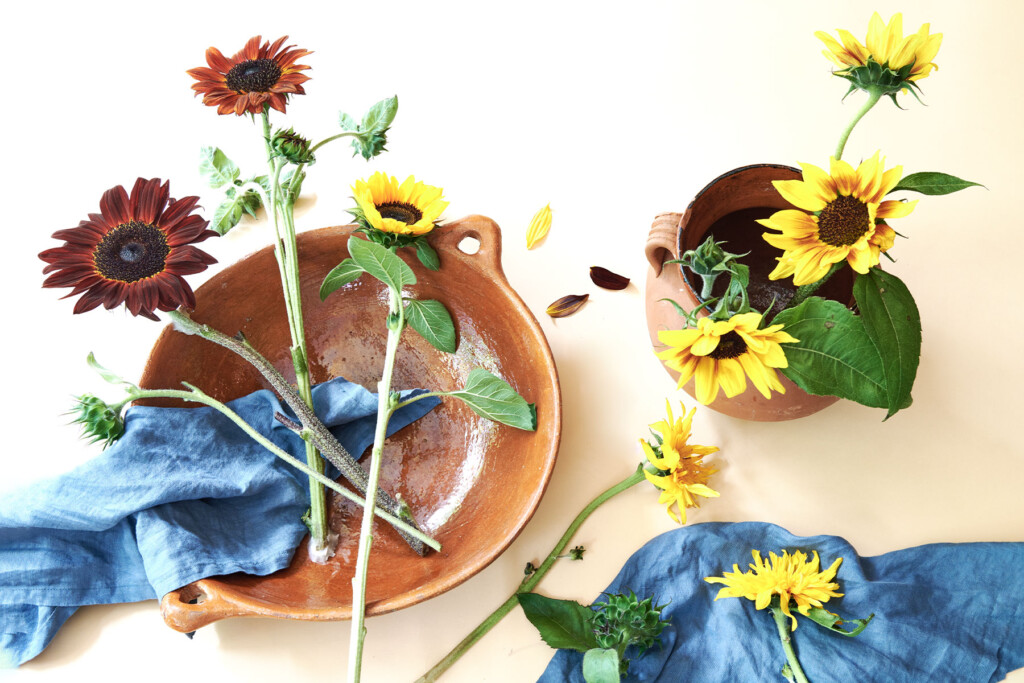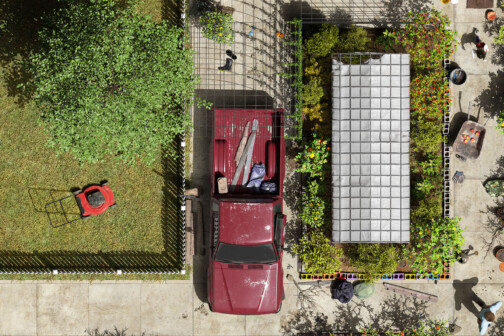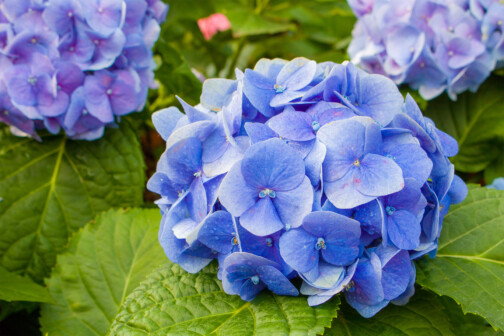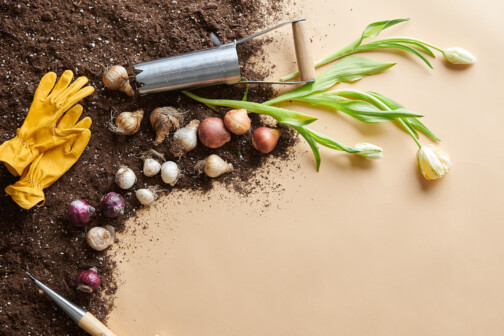Would you believe me if I told you that sunflowers are among the most interesting flowers in my cutting garden right now? Thanks to advancements in breeding, sunflowers are now available in an array of gorgeous colors, from green to mauve, and they’re remarkably easy to grow.
Regardless of the specimen, one of my secrets to gardening success is sourcing seeds from suppliers that cater to professional growers. This allows me confidence that the things I plant will perform reliably and also gives me access to the latest in plant breeding innovations.
For one-of-a-kind sunflowers, my favorite sources are Johnny’s Selected Seeds and Sunflower Selections. Though both companies serve professional growers, anyone can buy from them. Sunflower Selections is the retail arm of sunflower-breeding company NuFlowers, which offers 53 different sunflower cultivars. Their breeders developed the ProCut series—big, pollenless, single-stem sunflowers that make perfect cut flowers for arrangements. Of the 17 ProCuts available, my favorites are the white-petaled “ProCut White Lite” and pink-petaled “ProCut Plum,” though this year, I’m auditioning dark and moody varieties, like the nearly black burgundy “Chianti,” deep maroon “Rouge Royale,” and rust-colored “Terracotta.”
How to Grow Sunflowers for Cutting
Sunflowers are impossibly easy to grow, but here are a few things to consider when planning to use them as cut flowers:
- Though fastest seed germination occurs in soil that has warmed to at least 70 degrees, sunflower seeds can be sown anytime between late March and late August. I like to get a jump start on the season by germinating seeds indoors in late February and transplanting them out into the garden once all chances of frost have passed.
- Sunflowers appreciate well-drained soil. If you struggle with heavy clay in your garden, amend your soil with high-quality compost and expanded shale to a depth of six to eight inches before planting.
- For a continuous harvest, plant sunflowers in succession. This is especially important for single-stalk sunflowers that won’t rebloom. Plant a batch of seeds every one to two weeks.
- If giant blooms are your goal, give individual sunflowers up to nine inches of space between plants. For smaller blooms to be used in mixed bouquets, I space my single-stem sunflowers six inches apart.
- Sunflowers can be harvested anytime after the first color shows, but earlier-harvested blooms will have the longest vase life. Sunflowers tend to muck up vase water faster than other flowers, so adding a preservative like Crystal Clear will keep the water clean while prolonging flower life.
Callie Works-Leary is a Texas Master Gardener and founder of The Dallas Garden School, which offers classes and resources for North Texas gardeners. She is a native of Dallas.







